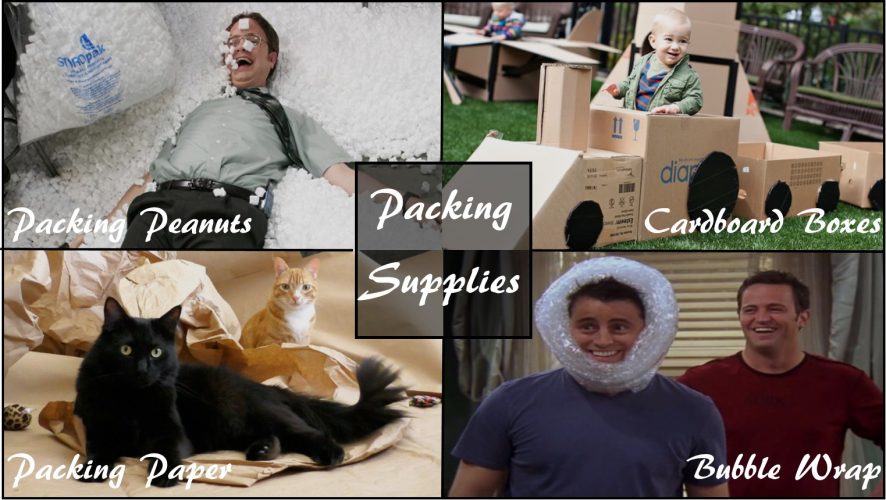How to Pack a Moving Box and What to Use

Bubble wrap, packing peanuts, cardboard boxes, packing paper...sometimes we forget these fun-to-play-with materials have a very practical use when you're relocating or moving boxes into storage. When transporting boxes from point A to B their contents will shift and get damaged if boxes aren’t filled correctly. Underfilled boxes will collapse while overfilled boxes will rupture. If you’re doing your own packing, the moving company is not liable for any boxes packed by the customer. Besides securing each individual item inside the box, you'll need packing materials to fill empty spaces so let's see what else these materials can be used for besides...
Packing Peanuts
Biodegradable packing peanuts are ideal for filling up small and large empty spaces, and are not just for swimming. Pour a layer of packing peanuts into the bottom of each box to pad heavy items. When boxes are being placed down in the truck, the impact could crack a dish at the base of the stack if there is no cushion. Also, use packing peanuts between items wrapped in other materials.
Packing Paper
Packing paper is an acid-free and ink free newsprint paper good for cat beds and protecting fragile items such as dishes, glassware, valuables, collectibles, home décor, and much more. Use it to wrap up paintings and other items to prevent them from getting scratched. It’s also ideal for wrapping up small kitchen appliances, utensils, or items that will be packed at the bottom of a box. Crumpled packing paper is one of the best inexpensive, recyclable materials for filling empty spaces.
Cardboard
If you know you’re moving in advance, start saving your cardboard boxes, and have your kid load the cross-country train. Odds are, you get plenty of boxes from packages you receive so it’s a free packing resource. Break the boxes down into flat panels and slip them between paintings, photo frames, or other items wrapped in packing paper. Cut the boxes up and make cells for stemware and fragile bottles.
Cushion Foam
There's nothing funny about cushion foam. It's sturdy, versatile, and sold in a variety of styles including pouches, sheets, and kits for dishes and glasses. Cushion foam is great for isolating items so they don’t knock against each other during transit, plus it’s safe for electronics. Slip a dish inside a pouch or place a sheet between bowls to keep them secure in a stack. You can also fold a couple sheets and layer it on the bottom of each box to pad heavy items as a cleaner, reusable option to packing peanuts.
Bubble Wrap
Bubble wrap is ideal for protecting your friend's head when it's being used as a punching bag but more commonly used for cushioning breakables such as dishes, glassware, home décor, collectibles, and much more. Bubble wrap comes in four standard sizes that refer to the height of the bubble; 1/8" (super small), 3/16" (small), 5/16" (medium), and 1/2" (large). Always wrap the top of the bubbles against your item for the most protection. Wrap glass and fragile items into a ball of small bubble wrap and tape it closed so it doesn’t unravel. This material is great for isolating small items with an odd shape. For larger, less fragile items, use medium bubble wrap. If you have a considerable amount of space to fill in a box, large bubble wrap can be a good filler material.
Don’t forget to buy large, medium, and small moving boxes, a permanent marker for labeling, and plenty of sturdy packing tape.
Quick Tips for Packing a Moving Box
- Group items of similar size and weight in the same box.
- Try not to mix belongings from different rooms.
- Cushion the bottom of the box with a layer of packing material.
- Wrap the heaviest items first and place them in the bottom of the box.
- Put a layer of padding over the heavy items to separate them from the light items.
- Wrap all belongings in packing material.
- Secure the contents by filling in empty spaces.
- Construct and seal the box with sturdy packing tape.
- Label the box with its contents and destination room.
